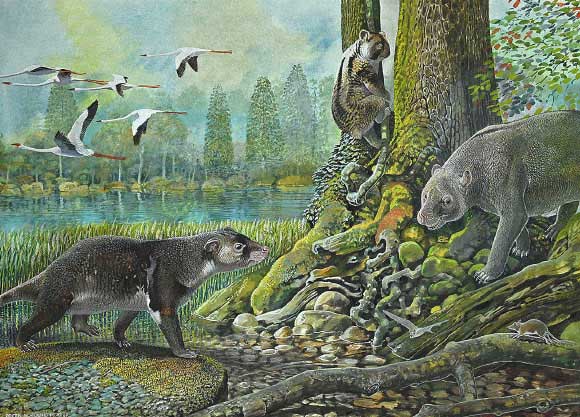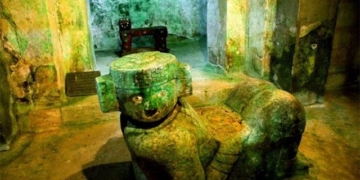Researchers in Australia have discovered the fossilized teeth of a prehistoric marsupial (koala) dating back 25 million years in a remote region of the country.
According to research published by Flinders University on September 7, lead author and PhD candidate Arthur Crichton reported the discovery of fossilized teeth at a site 100 km south of Alice Springs in the Northern Territory. Preliminary analysis indicates that these fossilized teeth are approximately 25 million years old.

Reconstruction of a prehistoric koala.
This is a previously unknown species of koala. Based on the shape of the teeth, scientists have named this species Lumakoala blackae, with “Luma” in Latin meaning “thorn.”
According to Crichton, this new koala species weighed about 2.5 kg, significantly smaller than a modern adult koala, which weighs around 15 kg, and primarily fed on soft leaves. He believes this finding helps fill a 30-year gap in the evolutionary history of Australia’s iconic marsupials.
Computational analysis of evolutionary relationships shows that Lumakoala blackae is a member or closely related to the koala family, but this species also shares similarities with some fossil marsupials dating back 55 million years, known as Thylacotinga and Chulpasia, discovered in the northeastern region of Australia.
Previously, the two species Thylacotinga and Chulpasia were believed to be closely related to marsupials in South America. However, the discovery of Lumakoala blackae suggests that Thylacotinga and Chulpasia may be the original relatives of grazing marsupials in Australia, such as koalas and kangaroos.
In addition to the fossilized teeth of Lumakoala blackae, researchers also found fossilized teeth from two other koala species, Madakoala and Nimiokoala, that lived during the same period.
Gavin Prideaux, director of the Paleontology Laboratory at Flinders University, stated that this is the first record of koalas appearing in the Northern Territory.


















































